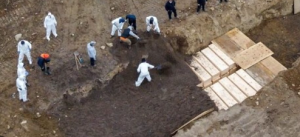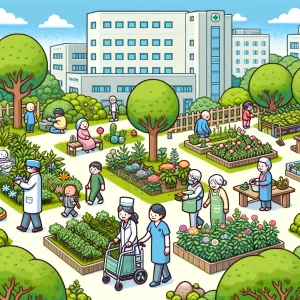
Living Near Illegal Dumpsites Doubles Respiratory Risks
Every morning in Rocklands, a township in Bloemfontein, South Africa, families step out into air tinged with smoke, dust, and decay. Just down the road lie vast illegal waste dumping sites—three of them—where household garbage, rotting food, and plastics pile up in the open air. It’s unsightly, yes. But as new research shows, it’s also dangerous.
A recent study published in the International Journal of Environmental Research and Public Health has confirmed what residents have long suspected: living near these illegal dumpsites is making people sick—particularly in the lungs.
Dump Sites and Damaged Lungs
Researchers surveyed 200 residents living in Rocklands. Some lived within 5 kilometers of an illegal dumping site; others were further away. They asked about respiratory symptoms like coughing, wheezing, shortness of breath, and chest tightness—classic indicators of pollution exposure.
The findings were stark:
- People living near dump sites were 2.8 times more likely to experience wheezing.
- They were also 2.9 times more likely to report chest tightness.
- Nearly half of residents near dumps reported persistent coughs—compared to just over a quarter of those farther away.
While cough and shortness of breath weren’t statistically significant after controlling for factors like age and education, the trend was clear: proximity to waste mattered.
Why Is This Happening?
Illegal dumping isn’t just a sanitation issue. These waste piles release harmful pollutants, especially when burned or when decomposing in the sun. They attract vermin, harbor mold, and send clouds of fine particles into the air.
And it’s not just about the trash. South Africa’s townships often struggle with overcrowding, under-resourced municipal services, and poor infrastructure. Rocklands is no exception. With spotty waste collection and few alternatives, open spaces quickly become makeshift landfills.
Even though 88.5% of residents recognized illegal dumping as a community issue, only 38% knew it could harm their health.
A Bigger Picture: Environmental Injustice
What’s happening in Rocklands isn’t unique. Across low- and middle-income countries (LMICs), communities are facing rising waste volumes and falling municipal capacity. In South Africa alone, over 3.6 million tons of waste go unmanaged every year.
And where do these dumps end up? Usually near marginalized neighborhoods, where land is cheap and regulations are lax. It’s an environmental injustice with very real health consequences.
The Community’s Take: “We Want to Fix This”
Despite the challenges, Rocklands residents aren’t giving up. When asked how to stop illegal dumping, they had ideas:
- 91% supported public awareness campaigns
- 94% said they’d sort waste—if only they had proper bins
- 32% championed recycling
- 25% called for cleaner communities
This shows that the problem isn’t apathy—it’s access. People care. They just need the right tools, services, and information to act.
Policy Solutions: From Sunshine to Smart Bins
The study doesn’t just point fingers. It highlights solutions.
First, there’s a need for stronger enforcement and smarter regulation. The authors point to Portugal’s “sunshine regulation,” a system that publicly benchmarks waste management services to shame poor performers into action. Something like that could work in South Africa too—if adapted locally.
Second, tech can help. Smart bins, waste tracking apps, and community monitoring tools could bring transparency and accountability to illegal dumping hotspots. IoT and AI aren’t just for fancy cities—they can serve struggling communities too.
Finally, health systems need to step in. Respiratory screenings, mobile clinics, and public education campaigns could go a long way in protecting at-risk residents—especially children, seniors, and people with chronic illness.
What’s Next? Research, Resources, and Responsibility
The authors caution that this study, while important, has limits. It’s based on self-reported symptoms and doesn’t include environmental pollutant measurements or clinical diagnoses. Larger, longer studies are needed to better understand the exposure pathways and identify the most effective interventions.
But that doesn’t mean we should wait.
Illegal dumping is not just a waste problem. It’s a public health emergency.
Governments, funders, and community groups need to align around shared solutions that combine better infrastructure, smarter regulation, and deeper community engagement. With the right support, neighborhoods like Rocklands could become models of grassroots resilience—not cautionary tales.
Join the Conversation
- What’s the waste management situation in your community?
- How do you think governments should balance enforcement vs. education?
- Would you support smart bins or digital waste tracking in your city?
Let us know in the comments—or better yet, start a conversation with your neighbors.



